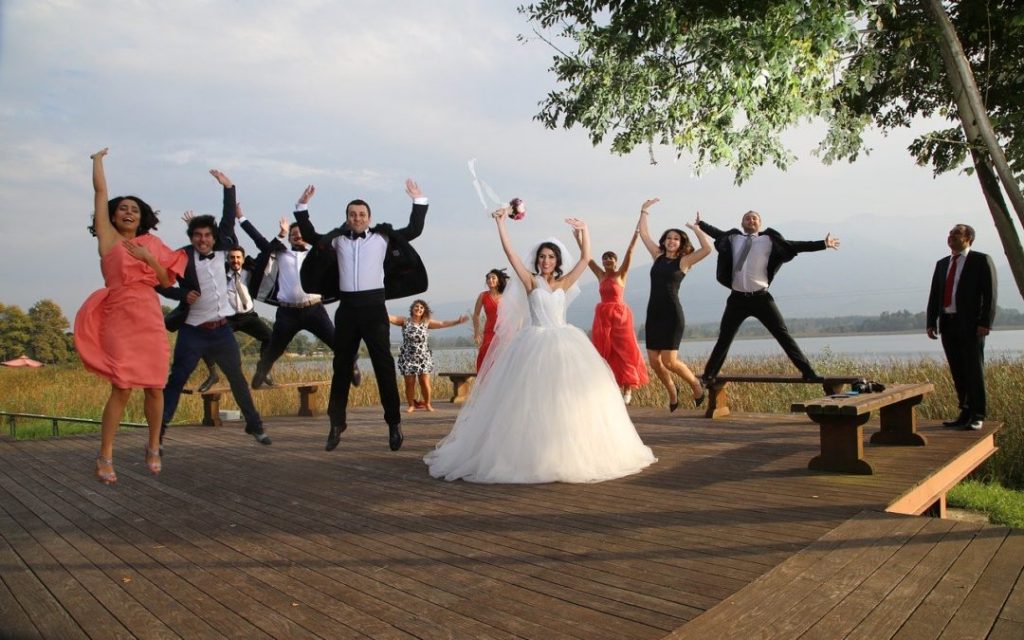Congratulations, your friends are getting married!
They invite 100 random guests to their wedding, all of them are locals from your country. Now let’s assume that in your country 1 out 100 people is an unconfirmed carrier of Coronavirus.
What are the chances that at least one of the guests in the wedding is a Corona carrier?
:
:
Is it 1%? Less than 1%? Perhaps 5%? How about 10%? These were some of the answers I got when I sent this question to a few of my friends and family members.
:
:
But the real answer is 63.4%, which is way higher than what most people think or believe.
To calculate this number, I had to recall a few basics I learned long-long time ago, in the “Introduction to Statistics” course. It goes like this: start with the opposite event – healthy guests. There’s a 0.99 chance for each guest alone to be healthy, therefore the probability that all 100 guests are Corona free is 0.99*0.99……*0.99 = 0.99^100 = 0.366; All other combinations include at least one Corona carrier, so together their chance is: 1 – 0.366 = 0.634 which is 63.4%
What if the number of guests was 250? In that case the chances for at least one Corona guest would have climbed to a whopping 92%! (1 – 0.99^250 = 0.92)
What if they settled with an intimate 10-guest wedding? The chances would have dropped to 10% (1 – 0.99^10 = 0.1).
Notice that I’m not talking about the chance to get infected, which depends on additional factors such as type of symptoms, closed/open space size, distancing, face masks, etc. This is just about the chance to be in the same place with a carrier – which is pure math.
This example partially explains why governments all over the world have suspended mass public events, and limited attendance in private events, restaurants, stores, etc.
All these precautionary measures have a huge effect on the lives of millions of people and the economy. But while they are necessary to protect the public’s health, many people do not understand the necessity. They know Coronavirus is highly infectious, but they have no idea how likely they are to be near Corona carriers when they join a large group of people. And it’s not their fault. It’s the people in charge, who fail to communicate the relevant numbers whenever they impose these kinds of restrictions.
Sure, it’s important to track the absolute number of confirmed COVID-19 cases and their daily change. It’s all over the media. But how do you quantify the actual risk in common activities and effectively communicate it to the people? Wouldn’t that bring more people to change their behavior and comply with the new directions?
If you knew there’s more than 60% chance that you’ll be in close range with a Corona carrier in an indoors event – would you still go to this event? I wouldn’t, even if authorities allow it. I’m sure many people would also avoid it, or only attend if social distancing and face masks are enforced.
In marketing, sharing some tangible numbers with your customers can help you build your case.
- Instead of telling people “elevators pose a high infection risk”, tell them “riding a 5×5 foot elevator with 4 people instead of 2 increases your infection chance by 20 times”, or “taking the stairs is 12 times safer than riding the elevator”.
- If your header is about ultra-fast charger, add a sub-header about “only 8 minutes to fully charge a standard electric bike battery”.
- When you market a high availability cloud solution, emphasize the “five 9s” (99.999%) up time and that “hot swap backup system, taking only 10 minutes to bring up and sync”.
Eventually it’s about striking the right balance. There is a wide room between keeping it too high level and pouring all the numbers from your full datasheet. If you know your audience and pay attention to their needs, you can provide them just enough meaningful numbers in your messaging. From my experience, unless you market to a very technical oriented audience, most people don’t care how you calculated these numbers as long as they are true.

